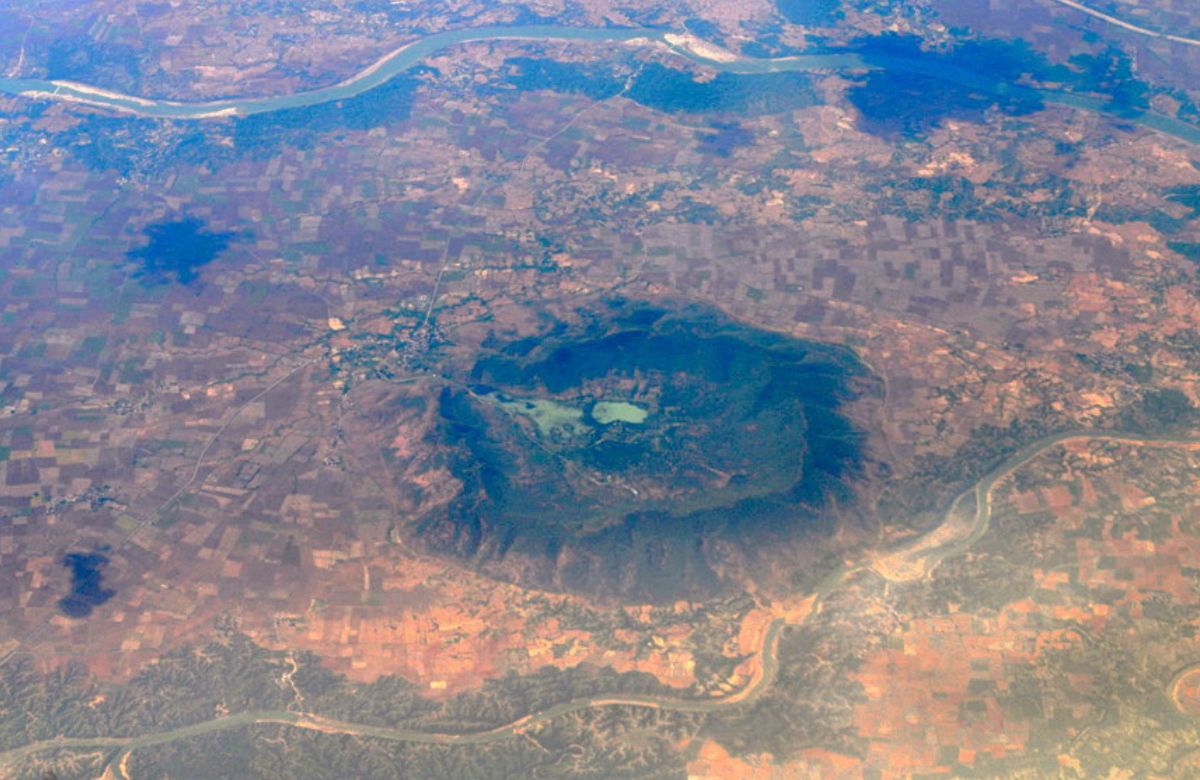Nestled in the heart of Rajasthan, India, lies a geological marvel that captivates the imagination and unveils the secrets of our planet’s tumultuous past—the Ramgarh Astrobleme or Ramgarh Crater. With a history dating back to 600 million years ago, the structure holds a wealth of scientific significance. Now, this historical, well-known geological feature is soon going to be developed as a geo-tourism site.
What Is The Ramgarh Crater?
#Ramgarh crater in #Rajasthan state #India, from #ISS, 24Jan2020, enhanced, north at right, hi-res https://t.co/AvX1UNNvKD @DaveAtCOGS pic.twitter.com/igStVNQHvb
— huub eggen (@phi48) January 28, 2020
Also known as Ramgarh Astrobleme, the site represents a geological feature formed by the impact of a meteorite or asteroid. About 600 million years ago, there was a meteor impact in Rajasthan’s Ramgarh that created this permanent crater mark.
The Ramgarh Astrobleme is located in the Pali district of Rajasthan, approximately 50 kilometres north of Jodhpur. Spanning an area of 3.5 kilometres in diameter, it is one of the largest and most well-preserved impact craters in India. Over millions of years, geological processes like erosion and deposition have slightly modified the original shape of the crater. But its distinct features are still visible to the keen eye.
According to News18, the site’s development as a tourist attraction site will cost ₹57.22 crore. This includes beautification of the crater lake, infrastructure development and other decorative work around the site.
Beyond its geological significance, the Ramgarh Astrobleme holds cultural and historical importance as well. The local communities have developed myths and legends around the crater, adding to its mystique. Ramgarh is believed to be the result of Lord Ram’s arrow striking the ground during the epic Ramayana.
Also Read: 200-Year-Old Talabgaon Castle In Rajasthan Brings You The Essence Of The Bygone Era
Are There Other Crater Sites In India?
Ramgarh crater lake in Rajasthan, hardly anyone knows about it. And pic used below is from that place and not Lonar crater lake. https://t.co/8Uci1qqP5Y https://t.co/aJTUwSGeqT
— TeamGsquare 🇮🇳 (@TeamGSquare) August 31, 2021
Including Ramgarh Crater, there are three such impact craters in India that are also quite popular as tourist destinations. The other two are Lonar Crater in Maharashtra and Dhala Crater in Madhya Pradesh. The Dhala Crater is the oldest and the biggest impact crater in India, about 2500 million years old!
These crater sites are a unique natural laboratory that allows scientists to study the effects of asteroid impacts on the Earth’s surface. Researchers have discovered various mineral deposits, including shatter cones and shocked quartz. These provide evidence of the intense pressures and temperatures generated during the impact. They gain a deeper understanding of mass extinctions, climate change, and the potential for life on other celestial bodies.
The site has also become a popular destination for geo-tourism, attracting visitors from around the world who are fascinated by the wonders of our planet’s history.
Cover image credits: Wikimedia Commons
First Published: May 22, 2023 11:54 AM



